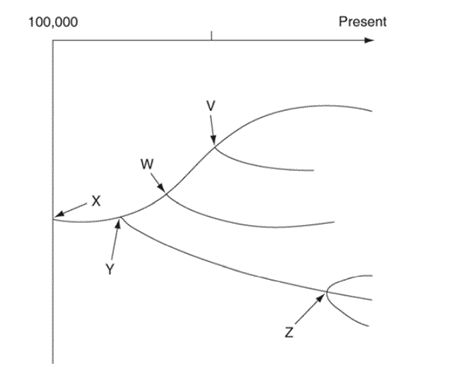#Question id: 8289
#Section 2: Evolution
The term convergent evolution is most applicable to which of the following features?
#Question id: 8290
#Section 2: Evolution
If, someday, an archaean cell is discovered whose rRNA sequence is more similar to that of humans than the sequence of mouse rRNA is to that of humans, the best explanation for this apparent discrepancy would be ________.
#Question id: 8291
#Section 2: Evolution
Which of the following pairs are the best examples of homologous structures?
#Question id: 8292
#Section 2: Evolution
Some molecular data place the giant panda in the bear family (Ursidae) but place the lesser panda in the raccoon family (Procyonidae). If the molecular data best reflect the evolutionary history of these two groups, then the morphological similarities of these two species is most likely due to ________.
#Question id: 8293
#Section 2: Evolution
The importance of computers and of computer software to modern systematics s is most closely linked to advances in ________.
#Question id: 8294
#Section 2: Evolution
The common ancestors of birds and mammals were very early (stem) reptiles, which almost certainly possessed three-chambered hearts (two atria, one ventricle). Birds and mammals, however, are alike in having four-chambered hearts (two atria, two ventricles). The fourchambered hearts of birds and mammals are best described as ________.

